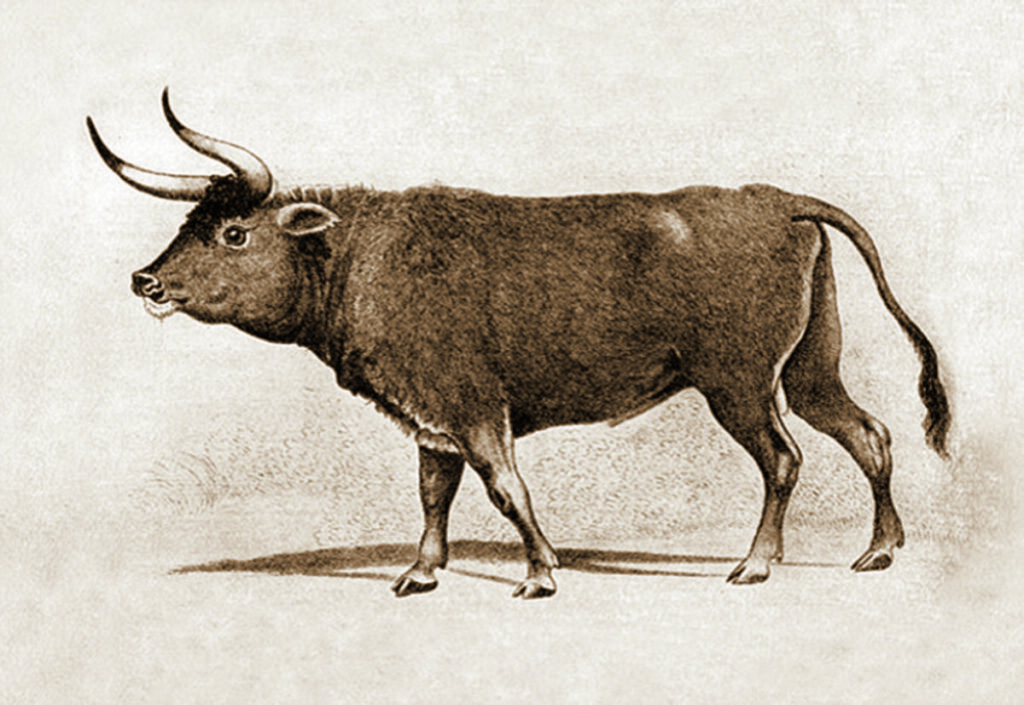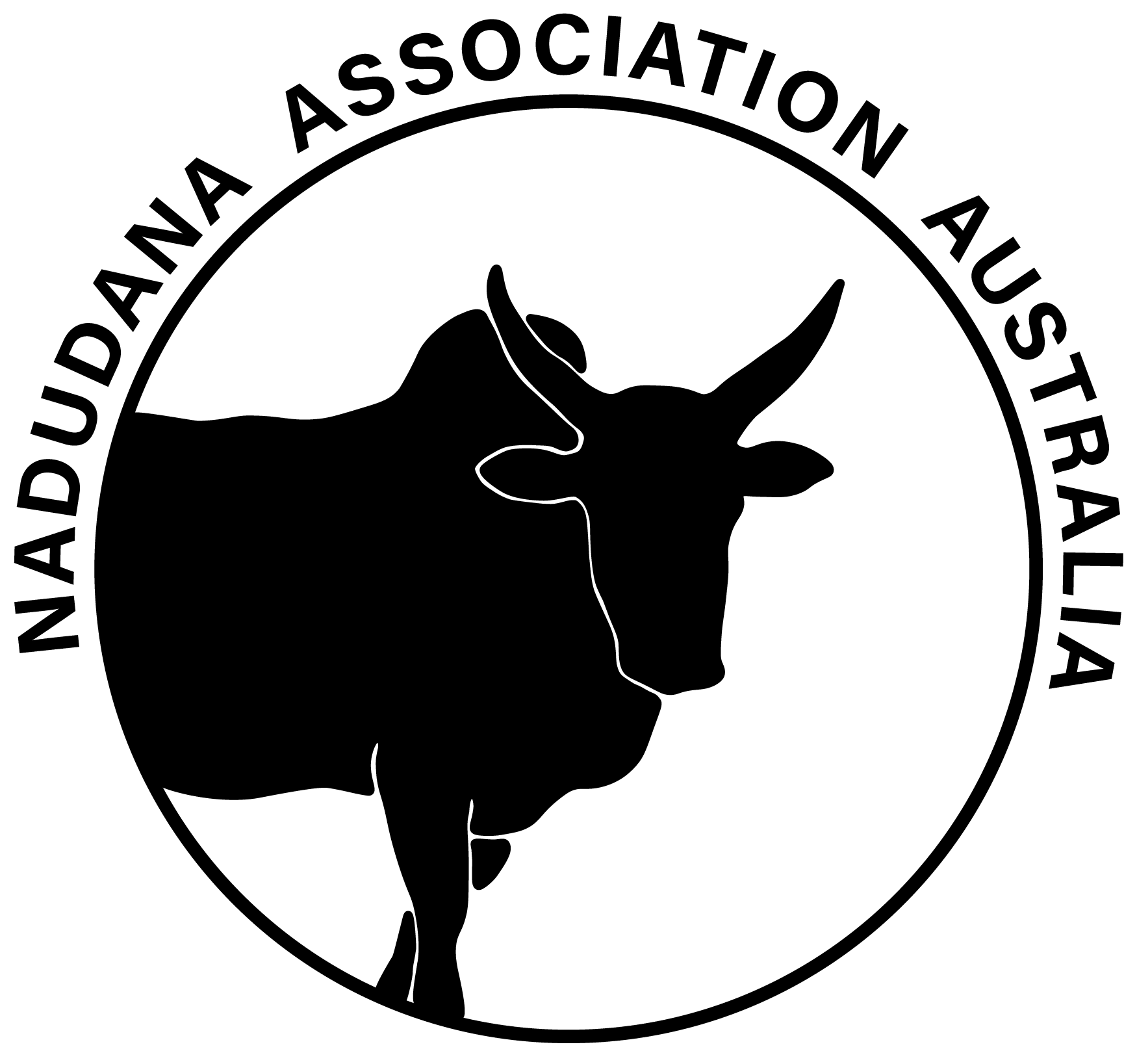A Brief History

Nadudana (pronounced as ‘Nah-Dah-Nah’) is a Hindi word meaning small cattle. The name has been adopted as the name of the breed of cattle in Australia derived from an importation of miniature Zebu cattle from the USA. They are thought to have a stable gene line reaching back many centuries in the Indian sub-continent and some claim this extends as far back as 6000BC. Formal records for many breeds of pure Zebus can trace the breeds back into the 1600’s. The word Zebu is derived from the Tibetan word ‘ceba’, which means ‘hump’ and the term refers generally to humped cattle of the Bos indicus species. Nadudana or Miniature Zebu cattle are known to be one of the oldest, rarest and truest breed of small cattle in the world. They were kept and bred on temple grounds for their small size.

The common ancestor of all bovines was the Auroch. These are the cattle displayed in the cave paintings of western Europe-humped cattle with lyre-shaped horns, small hindquarters and massive, deep chests. Aurochs are thought to have become extinct in the 1600s, although recent attempts to recreate the Auroch have resulted in cattle with a striking resemblance to the original.

Descendants of the Aurochs were bison, yaks, and two types of cattle; Bos Taurus in Europe and Bos Indicus in South-eastern Asia. Bos Taurus are the cows with which many of us are familiar with-large, heavy beef and dairy cattle such as the Angus, Hereford and Jersey. Bos Indicus have humps, ”twitchy” skin, and thrive in hot, humid conditions and include the Brahman and Boran. Humped cattle are generically known as Zebu and today occur primarily in South Asia and Africa. The term ”Zebu” means ‘the hump of the camel” and was adopted in 1752 at the Paris agricultural fair to describe all breeds of Bos indicus. The hump was an artificially developed characteristic bred into the cattle during the early periods of its domestication. It came about by a process of selection by farmers in the Middle East. The first domesticated cattle were known to have existed nearly 10,000 years ago in the Middle East and were not humped.

The selection process for a larger hump was aimed at obtaining the best cattle as beasts of burden e.g. for pulling ploughs and carts. The hump is a well-developed muscle, well marbled with fat but it has no bone. It is cooked as a delicacy in South American countries. There are about 40 known breeds or varieties of Zebu developed in South Asia including India, Sri Lanka, and Indonesia. The African continent has another 35 Zebu breeds. In southern India, which is one of the principal cattle-raising districts of all India, there exists cattle known as the “Nadudana” or small cattle. This name has been adopted for the breed in Australia, but they are also known as Miniature zebu in other countries, including in the USA. Australian Nadudana are derived from these North American Miniature Zebu. The breed was first introduced into the USA in the 1920s from a number of different sources and were originally held in zoological gardens before eventually being taken up by a number of breeders. After many years of trying, by various people, the first Nadudana were imported into Australia in January 1995, with further imports of mature bulls in July 1995. There has only been 19 pure Nadudanas imported in Australia. The first purebred calf in Australia was born in August 1996 and the first purebred embryo calf was born in September 1996. This calf “Frosty” is believed to be the first successful embryo transfer Nadudana in the world.
Why Nadudana?
Nadudana are a general-purpose breed that can be used for beef and/or milk production. Whilst you can use them for production they are perhaps more suited to the hobby farmer. Why do we maintain this novel breed?
- Because we are helping to conserve a rare breed. From a national or global perspective, it is important to maintain some of our traditional breeds rather than relying exclusively on a small number of commercial breeds. We never know what genetic variation these breeds may hold for the future of domesticated cattle.
- They are different and create a different look in your paddocks
- They are calm and placid animals
- Due to their small size, they have a light footprint on the environment and they are easy on pasture, easy on fences and gates and easy to transport.
- The Nadudana can thrive on rough pasture
- Due to their capacity to thrive on lower quality grazing you can keep up to three times the number of head per hectare than you can for standard full size commercial breeds
- They require less supplementary feeding during lean times
- They are resistant to common tropical diseases and parasites
- They are very tolerant of high temperatures and can do well in Southern temperature climes, developing a thicker coat in the winter months, although it is preferable to give them shelter from cold and rain in the middle of winter.
- They are excellent mothers, protective of their calves and with few calving problems
- They come in a range of colours although white and light colours predominate
- They have a good conversion rate of fodder to meat which makes them popular for crossing with other smallish breeds
- Although we don’t know many members who have eaten their Nadudana due to their love of their animals and their rarity there are reports that the meat is highly sought after, being very tender and full of flavour.
- Being fine boned, carcasses yield high meat to bone ratio. They can produce good quality marbled meat low in cholesterol with boutique cut size and full of flavour when pasture grazed.
Nadudana are intelligent and docile and although in a herd they can look after themselves, they benefit from sensitive handling and with regular attention are tractable and easy to manage. They cannot be mustered like many old Zebu breeds, so chasing them on a quad bike will end in frustration for you and the cows. Rather they will follow you once they know what is required, helped by a bucket of feed or opening gates etc. They like to remain together, not be separated. Due to their ancient genetic structure, they cannot readily be used for embryo transplant, so it is critical the breed is fostered.
If you have only a small block of land, some of the smaller Nadudana can serve more as pets and can keep the grass down. However, we don’t recommend keeping solitary animals, Nadudana, like all cows, are herd animals and need company of their own kind.
